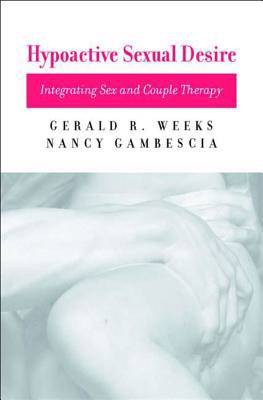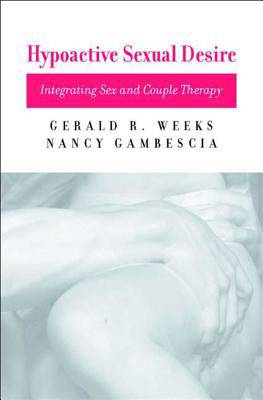
- Afhalen na 1 uur in een winkel met voorraad
- Gratis thuislevering in België vanaf € 30
- Ruim aanbod met 7 miljoen producten
- Afhalen na 1 uur in een winkel met voorraad
- Gratis thuislevering in België vanaf € 30
- Ruim aanbod met 7 miljoen producten
Zoeken
Hypoactive Sexual Desire
Integrating Sex and Couple Therapy
Nancy Gambescia, Gerald R Weeks
Hardcover | Engels
€ 30,95
+ 61 punten
Omschrijving
Over 50% of couples presenting for treatment will complain of insufficient sexual desire in one or both partners. Thus, all clinicians are very likely to encounter HSD in both individual and couple therapy practices.
Here, Gerald Weeks and Nancy Gambescia present a treatment model for HSD based on the integration of medical and psychological interventions. This book provides clinicians with the theoretical and practical tools to understand and treat this complex problem.
The book opens by providing a general background about HSD and describing the overall framework of the problem. The authors then review theories about the presence, absence, and normative amounts of sexual desire and cover factors that contribute to the lack of [sexual] desire from the individual perspective. Both nonpsychiatric and psychiatric factors are examined.
Later chapters discuss the relational and intergenerational factors that place couples at risk for developing HSD. The physiology of sexual desire and the biological factors that can diminish it (such as hormonal deficiencies, chronic illnesses, and the sexual side effects of some medications) are also discussed. Finally, the authors provide a comprehensive assessment approach for HSD and outline basic principles and strategies for treatment.
A couple's lack of sexual desire is a challenging issue for the clinician, but treatment is a rewarding endeavor. Every practitioner who wants to help couples revive their sexual relationship in the context of a significantly enhanced couple relationship will benefit from this book.
Here, Gerald Weeks and Nancy Gambescia present a treatment model for HSD based on the integration of medical and psychological interventions. This book provides clinicians with the theoretical and practical tools to understand and treat this complex problem.
The book opens by providing a general background about HSD and describing the overall framework of the problem. The authors then review theories about the presence, absence, and normative amounts of sexual desire and cover factors that contribute to the lack of [sexual] desire from the individual perspective. Both nonpsychiatric and psychiatric factors are examined.
Later chapters discuss the relational and intergenerational factors that place couples at risk for developing HSD. The physiology of sexual desire and the biological factors that can diminish it (such as hormonal deficiencies, chronic illnesses, and the sexual side effects of some medications) are also discussed. Finally, the authors provide a comprehensive assessment approach for HSD and outline basic principles and strategies for treatment.
A couple's lack of sexual desire is a challenging issue for the clinician, but treatment is a rewarding endeavor. Every practitioner who wants to help couples revive their sexual relationship in the context of a significantly enhanced couple relationship will benefit from this book.
Specificaties
Betrokkenen
- Auteur(s):
- Uitgeverij:
Inhoud
- Aantal bladzijden:
- 256
- Taal:
- Engels
Eigenschappen
- Productcode (EAN):
- 9780393703443
- Verschijningsdatum:
- 17/02/2002
- Uitvoering:
- Hardcover
- Formaat:
- Genaaid
- Afmetingen:
- 167 mm x 232 mm
- Gewicht:
- 498 g

Alleen bij Standaard Boekhandel
+ 61 punten op je klantenkaart van Standaard Boekhandel
Beoordelingen
We publiceren alleen reviews die voldoen aan de voorwaarden voor reviews. Bekijk onze voorwaarden voor reviews.











